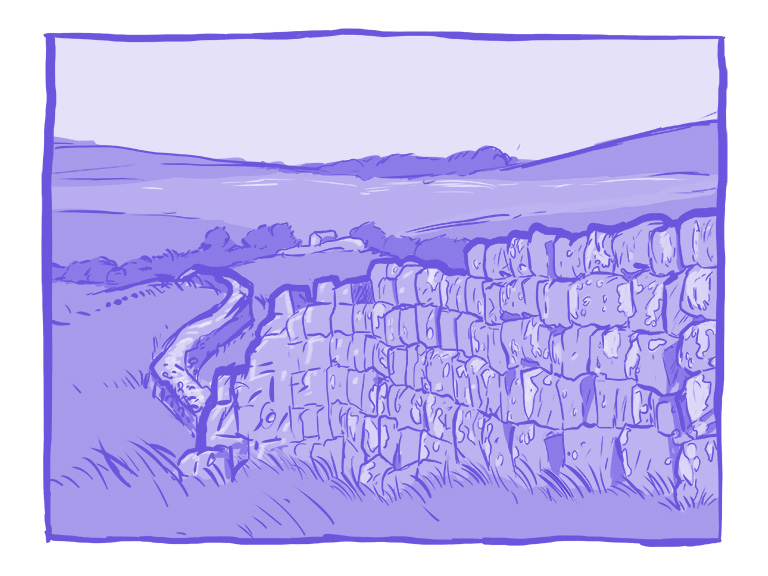Constructed at the Northernmost reaches of the Roman province of Britannia, on the outskirts of the empire, Hadrian’s Wall was built to defend Roman military and civilian settlements from the local Celtic tribes.
The tribes occupied the territory in the North of the island of Britannia, now present-day Britain. Ostensibly, the wall was built for protection, although truthfully it might have had less to do with the threat of attack from the tribal peoples of the British Isles, and more to do with Hadrian’s policies when he ascended to the position of the Emperor of Rome.
Hadrian took the throne in 117AD. At the time Rome was dealing with rebellions across the Empire, particularly at its outer edges, such as Egypt, Judea, Libya, Mauritania, and Britannia. It is thought that this was a sign to the new Emperor that his Empire had spread itself too thin, leading him to enact stances of defense over expansion. Thus, Hadrian’s wall was built, marking a very clear border at the edge of Roman territory in Britain. Despite this, it is clear the wall was never expected to put a stop to tribal migrations or invading armies, as it’s construction is most effective against small groups like cattle-raiders or bandits. While there are many conflicting theories, it seems more plausible that the wall was built less to stop violence, and more to control customs, smuggling, and help keep track of immigration.
The wall itself stretched 80 Roman miles, or 73 modern miles (117.5 kilometers), reaching from Wallsend in the east and Solway Firth in the west.
Forts, mile castles, and turrets also continued down the Cumbrian coast after the end of the wall in Solway, with fortifications marking the miles as far down as Ravenglass. The width and height of the wall’s structure depended mostly on available materials from the surrounding area, being made of mostly square stones in the section east of the River Irthing and measuring around 9.8 feet in width and 16 to 20 feet height. West of the river, the wall was made of turf and measured roughly 20 feet wide and only 11 feet high; later on, this section was rebuilt using stone. There were large ditches and mounds created on the southern side of the wall running parallel to the wall; this structure is now known as the Vallum.
The Romans created 80 milecastles, marking each mile of the route. They also created 17 larger forts, and an indeterminate number of observation towers. Around the forts, small camps of civilians sprung up which would eventually become villages over the years. Most likely, these communities grew from a mutual need: for the civilians, a need for security and income; for the soldiers, a need for goods and services. After 300 years, the Romans eventually abandoned the wall and many of the locals incorporated the stones into new construction projects, including many homes and businesses in the local towns that dotted the countryside.
Hadrian’s Wall took 6 years to complete and employed the labor of more than 15,000 legion soldiers. Despite Roman soldiers maintaining it for approximately 300 years, it is still debatable as to how much protection was afforded by its presence. It is likely that it was more for providing “Security Theater” than it was any actual measure of security. In truth, we may never know entirely how effective it was during the Roman occupation, but that doesn’t make it any less of an impressive feat of construction and engineering. What is left of the wall still stands nearly 1900 years later, and its impact on the people around it was clearly long lasting.

